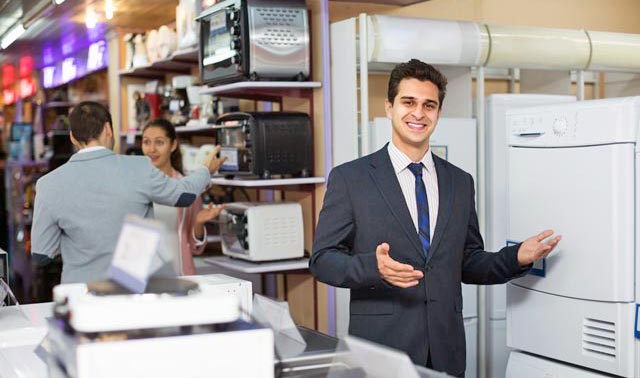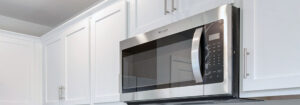Oven cleaning can be a time-consuming and often unpleasant task. That’s why the introduction of self-cleaning technologies, such as pyrolytic and catalytic ovens, has been well-received by many users.
Both pyrolytic and catalytic ovens have gained popularity for their self-cleaning features, offering convenience to users who want to minimise manual cleaning efforts. Over time, these features have become increasingly common in many modern ovens and are offered by various manufacturers.
Pyrolytic ovens
A pyrolytic oven is an advanced type of oven that has a self-cleaning feature using a process called pyrolysis. Pyrolysis is a high-temperature cleaning process that uses extreme heat to burn off and eliminate food residue, grease, and other organic substances from the interior surfaces of the oven.
The temperature during a pyrolytic cleaning cycle in an oven typically ranges from about 400 to 500 C (degrees Celsius). The exact temperature can vary depending on the oven model and manufacturer.
During the high-temperature phase, the organic residues inside the oven are subjected to intense heat, causing them to break down and turn into ash. The door of the oven is usually locked during this process for safety reasons, and the ash can be easily wiped away once the cycle is complete.
While pyrolytic ovens offer the convenience of self-cleaning, there are some potential disadvantages and considerations associated with their use. For example, the pyrolytic cleaning cycles involve raising the oven temperature to very high levels, which can result in increased energy consumption. This might be a concern for individuals looking to minimise their energy usage.
Additionally, the cleaning process typically takes a few hours to complete, which means the oven is not available for cooking during that time.
The pyrolytic cleaning process may produce some odours and smoke as organic residues are burned off. Ensure that the kitchen is well-ventilated during the cleaning cycle.
Despite these considerations, many customers find the convenience of pyrolytic ovens, with their self-cleaning feature, to outweigh the potential disadvantages.
Fun fact: The word “pyrolytic” comes from the Greek words “pyro,” meaning fire or heat, and “lysis,” meaning separation or breakdown.
Catalytic ovens
Catalytic ovens are a type of self-cleaning oven, but they use a different mechanism compared to pyrolytic ovens. In a catalytic oven, the interior surfaces are coated with a catalytic lining, which is a special type of porous, heat-absorbing material. This lining is designed to absorb and break down food splatters, grease, and other cooking residues at lower temperatures (usually around 200 to 250 degrees Celsius) than those required for pyrolytic cleaning.
While catalytic ovens offer a continuous cleaning feature and are generally considered more energy-efficient than pyrolytic ovens, there are some considerations.
For example, the effectiveness of catalytic cleaning may vary depending on the amount and type of residues. Heavy spills or large amounts of grease may still require some manual cleaning.
Also, the catalytic linings in the oven have a lifespan, and their effectiveness may decrease over time.
In summary, catalytic ovens provide a more continuous and lower-temperature self-cleaning mechanism compared to pyrolytic ovens. The choice between the two depends on individual preferences, cooking habits, and the specific features offered by different oven models.
Reading and adhering to the manufacturer’s instructions is crucial for the safe and effective use of any oven.








